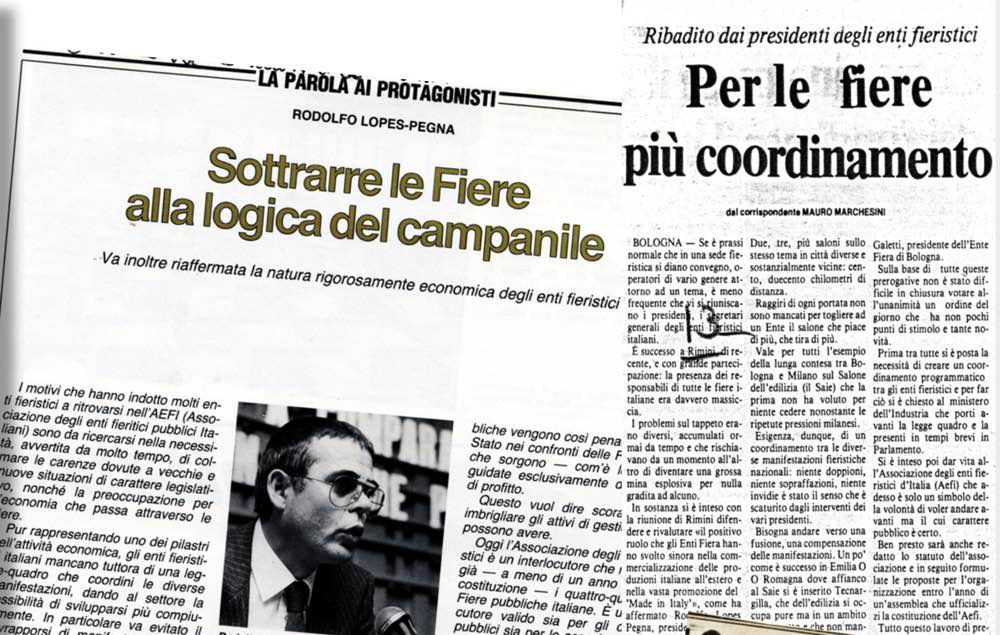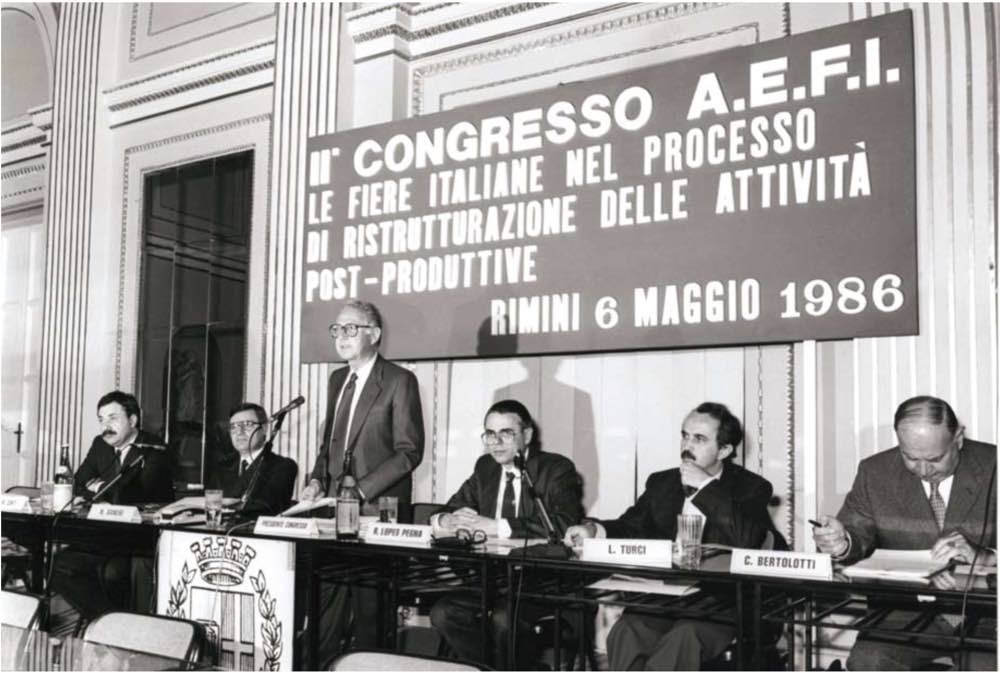1983 – 1993 The Constitution
A decade of great transformation and financial euphoria, the development of private enterprise and the desire for growth. Domestic demand boomed.
The transition from sample fairs to sector-specific specialised exhibitions was completed, creating a window onto the world of rich, innovative, differentiated, territorial and sector-based production activities. Italian exhibitions in fashion, furniture, mechanics and food, but also exhibitions to promote local manufacturing districts, established themselves on the world market.

The risk of excessive proliferation created a need for planning to prevent the waste of resources.
It was then that AEFI undertook the task of:
- making it clear to the authorities and the public that an exhibition is an enterprise at the service of the global development of the Italian System;
- coordinating territorial exhibition organisations and tackling the widespread tendency for events with a similar or identical commercial context to multiply;
- strengthening Italian exhibitions in relation to the international market by addressing market difficulties.
In order to attain its goals, AEFI drew up a statute, an organisational structure based on Institutional Bodies and Commissions, and sought synergies with key players in the system.
Article 2 of the Statute in particular clearly describes its role: “The non-profit Association promotes the development of the Italian national exhibition system in its cultural, economic and productive evolution, and represents it, within the limits of this statute, in its relations with Institutions, Administrative Bodies, and economic, political and social Organisations, at a national, European and international level.”

The Association had two chairmen during the decade, Rodolfo Lopes Pegna, chairman of Fiera di Rimini, who ended his term and became Secretary General in 1989, and Gino Colombo, secretary general of Fiera Milano, who remained in office until 1996.